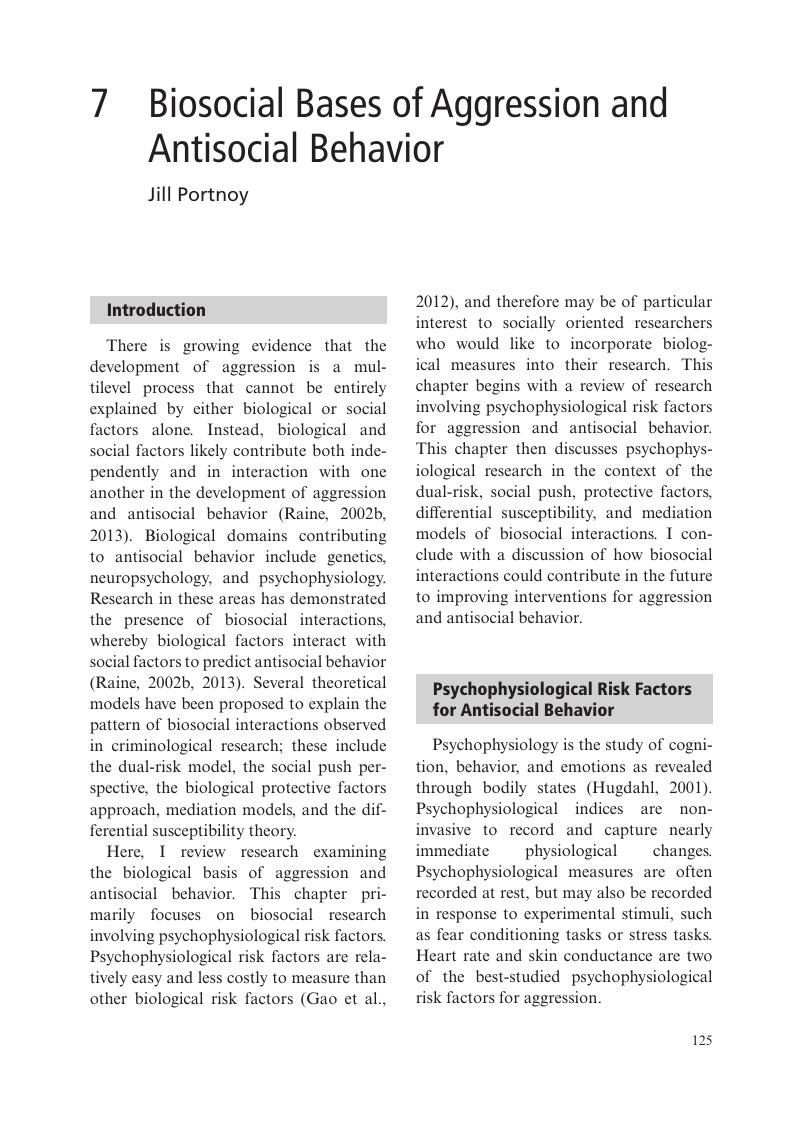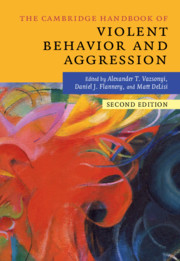Book contents
- The Cambridge Handbook of Violent Behavior and Aggression
- The Cambridge Handbook of Violent Behavior and Aggression
- Copyright page
- Dedication
- Contents
- Contributors
- Introduction: The Cambridge Handbook of Violent Behavior and Aggression
- Part I Introduction and Overview
- Part II Biosocial Foundations of Violence and Aggression
- 5 The Behavioral Genetics of Aggression and Violent Behavior
- 6 Neuroimaging Evidence of Violence and Aggression
- 7 Biosocial Bases of Aggression and Antisocial Behavior
- 8 The Neuropsychology of Violence
- 9 The Interaction of Nature and Nurture in Antisocial Behavior
- 10 The Neurobiology of Bullying Victimization
- 11 Molecular Genetics of Aggression and Violent Crime
- 12 Biosocial Foundations of Drug Abuse and Violent Delinquency
- 13 Personality and Aggression: A General Trait Perspective
- Part III Individual and Interpersonal Factors for Violence and Aggression
- Part IV Contextual Factors for Violence and Aggression
- Part V Looking Toward the Future
- Index
- References
7 - Biosocial Bases of Aggression and Antisocial Behavior
from Part II - Biosocial Foundations of Violence and Aggression
Published online by Cambridge University Press: 30 July 2018
- The Cambridge Handbook of Violent Behavior and Aggression
- The Cambridge Handbook of Violent Behavior and Aggression
- Copyright page
- Dedication
- Contents
- Contributors
- Introduction: The Cambridge Handbook of Violent Behavior and Aggression
- Part I Introduction and Overview
- Part II Biosocial Foundations of Violence and Aggression
- 5 The Behavioral Genetics of Aggression and Violent Behavior
- 6 Neuroimaging Evidence of Violence and Aggression
- 7 Biosocial Bases of Aggression and Antisocial Behavior
- 8 The Neuropsychology of Violence
- 9 The Interaction of Nature and Nurture in Antisocial Behavior
- 10 The Neurobiology of Bullying Victimization
- 11 Molecular Genetics of Aggression and Violent Crime
- 12 Biosocial Foundations of Drug Abuse and Violent Delinquency
- 13 Personality and Aggression: A General Trait Perspective
- Part III Individual and Interpersonal Factors for Violence and Aggression
- Part IV Contextual Factors for Violence and Aggression
- Part V Looking Toward the Future
- Index
- References
Summary

- Type
- Chapter
- Information
- The Cambridge Handbook of Violent Behavior and Aggression , pp. 125 - 135Publisher: Cambridge University PressPrint publication year: 2018



